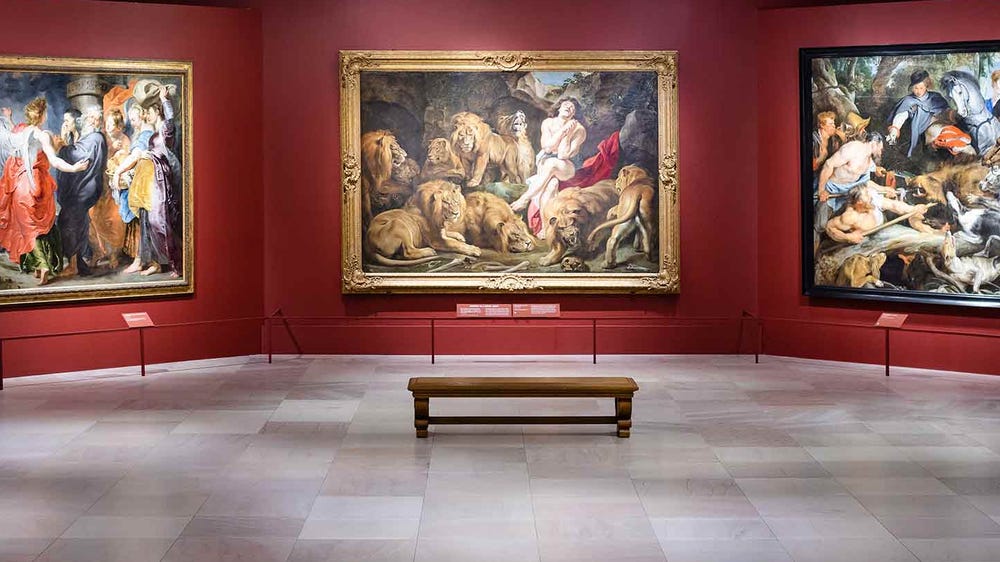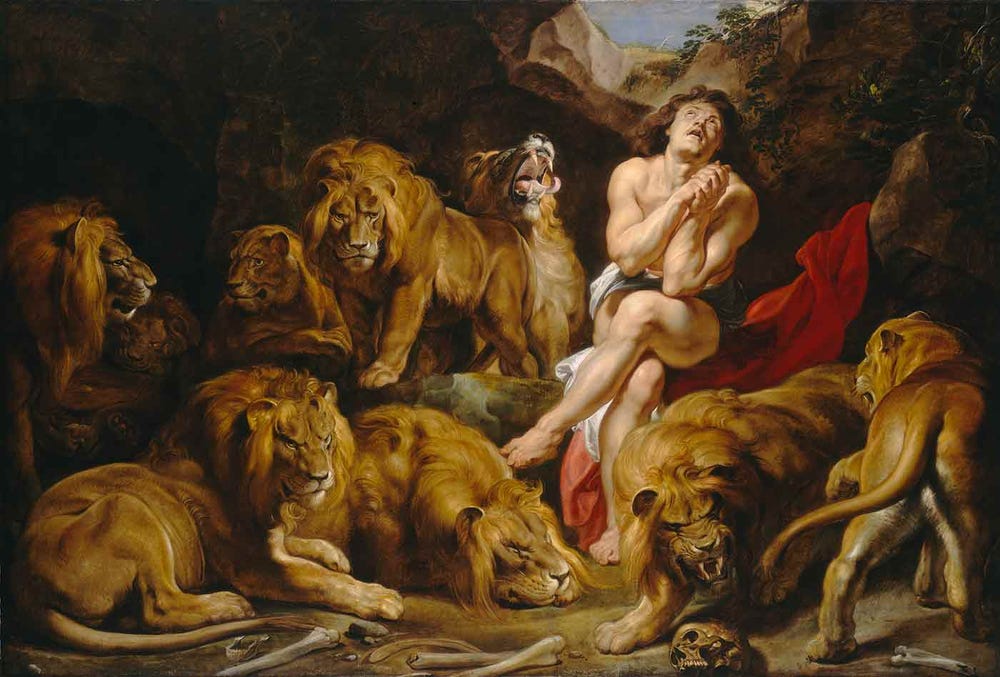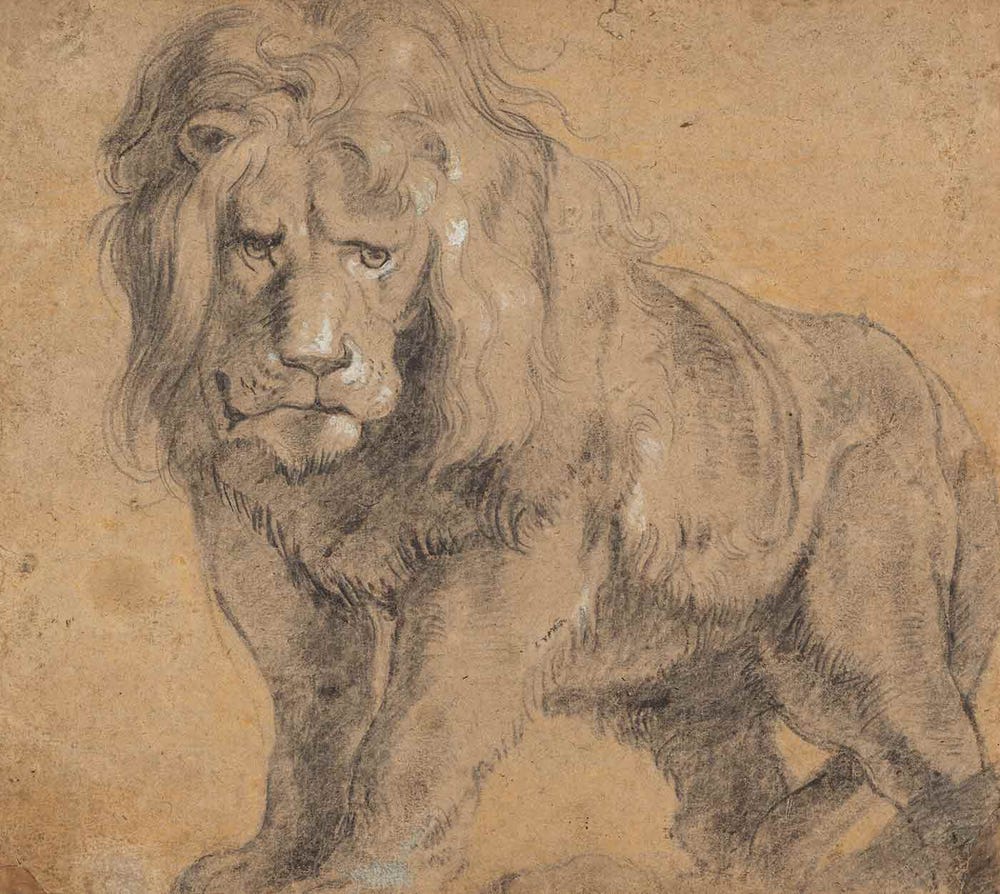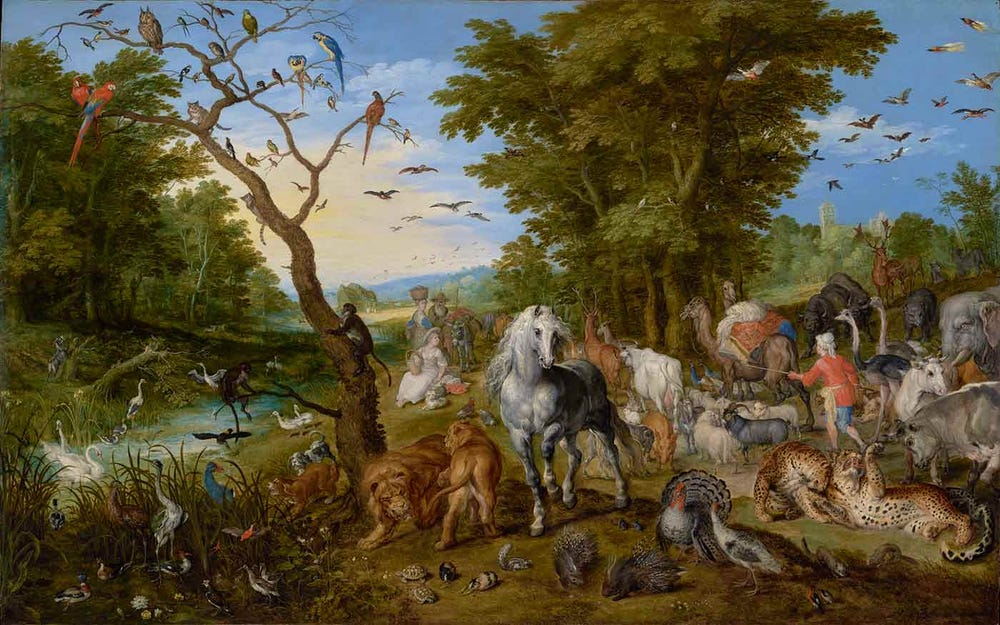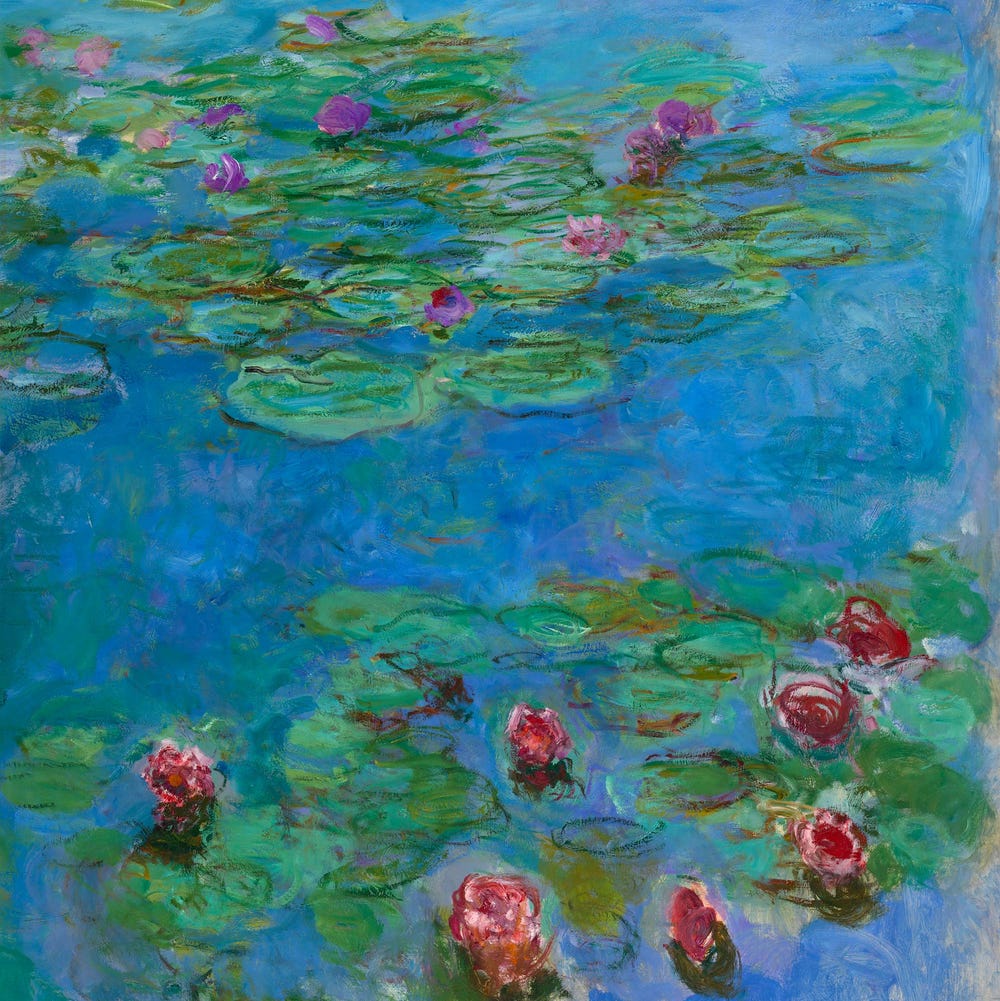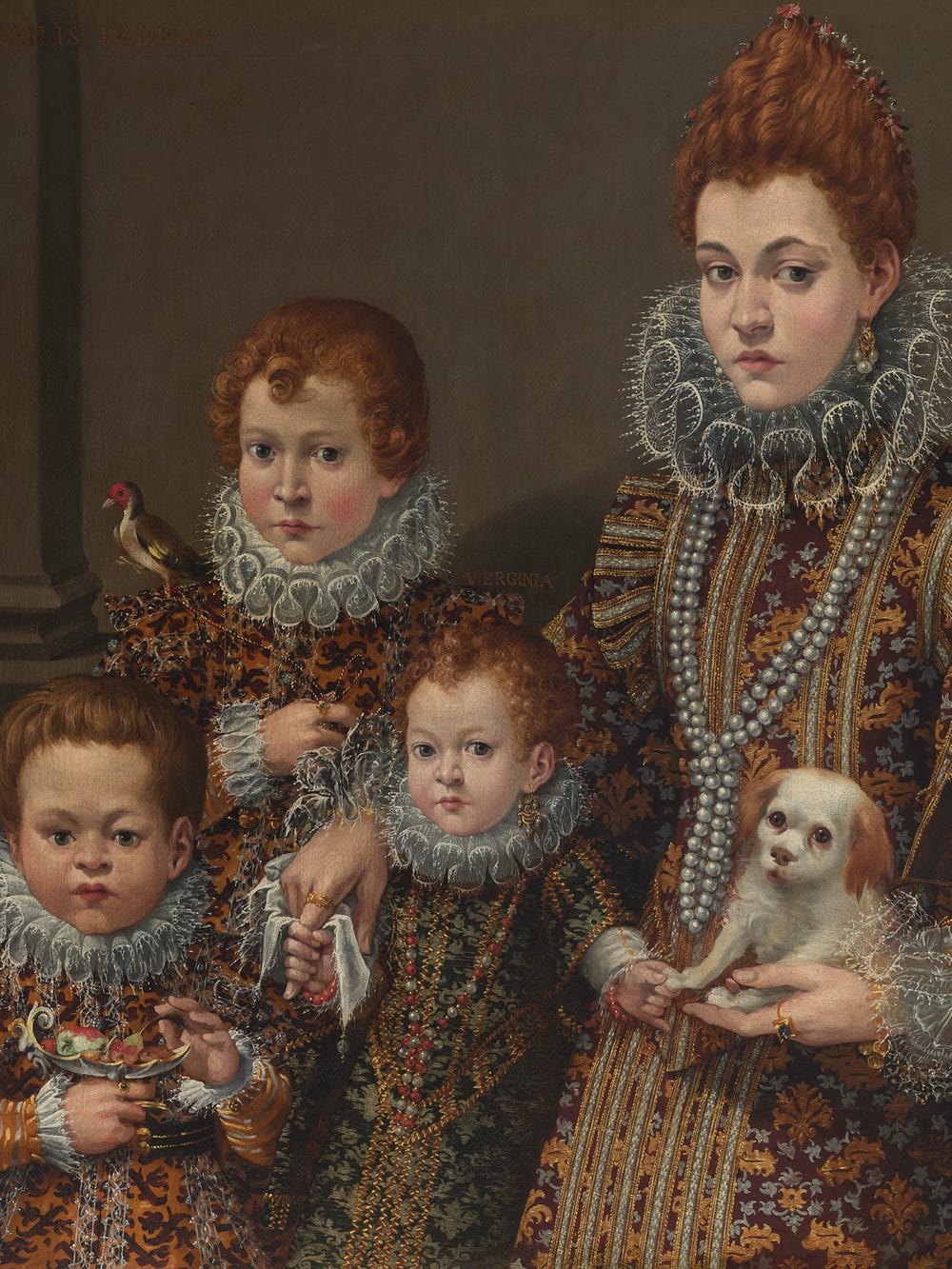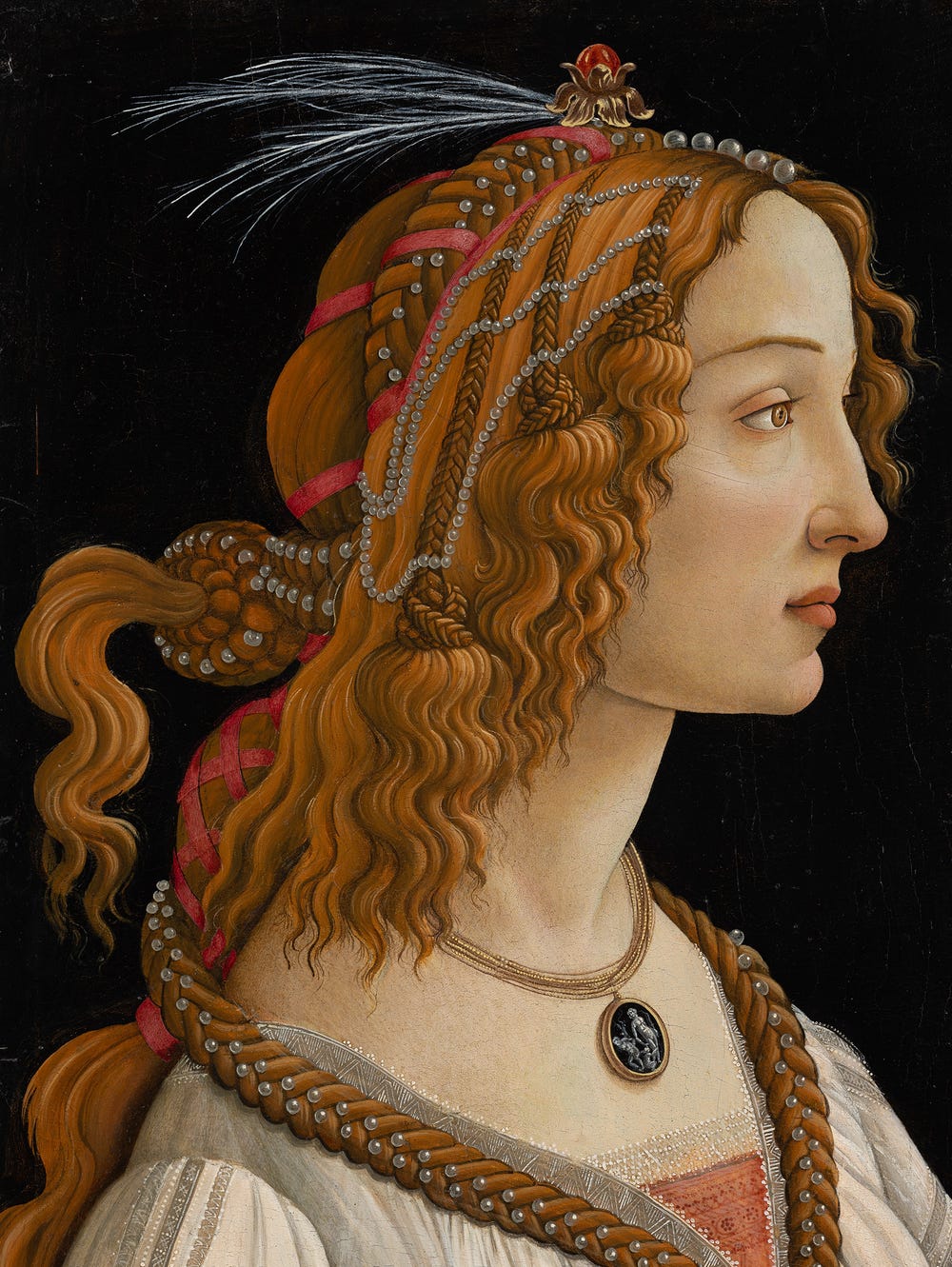Peter Paul Rubens’s colossal painting Daniel in the Lions’ Den (ca. 1614/1616) made it to the Legion of Honor for the special exhibition Early Rubens. The work is in the collection of the National Gallery of Art in Washington D.C., and is a favorite of visitors from across the country. Below is an excerpt from the exhibition catalogue, which unpacks some of the visual sources of Rubens’s feline drama.
Peter Paul Rubens, Daniel in the Lions’ Den, ca. 1614/1616. Oil on canvas, 88 1/4 x 130 1/8 in. (224.2 x 330.5 cm). National Gallery of Art, Washington, Ailsa Mellon Bruce Fund, 1965.13.1. Courtesy the National Gallery of Art, Washington DC
In the years following his return to Antwerp from Italy, Rubens painted several awe-inspiring, grand biblical epics. While usually commissioned by princes and priests and destined for the great palaces and churches of Europe, there were a handful of works that, according to Rubens, he kept for himself. Daniel in the Lions’ Den was one such painting. The earliest mention of it comes in April 1618, when Rubens entered complex negotiations with the English ambassador to The Hague, Sir Dudley Carleton, to trade several of his paintings for Carleton’s collection of antique sculpture. Rubens described Daniel in the Lions’ Den:
Daniel among many lions [is the] flower of my stock, particularly some pictures which I have kept for my own enjoyment; some I have even repurchased for more than I had sold them to others. [Daniel was] taken from life. Original, entirely by my hand.
Peter Paul Rubens
Measuring just over seven feet high and almost eleven feet wide, the painting represents a dramatic episode from the Old Testament, in which Daniel is sentenced to death for praying to God and is thrown into a den of lions by order of King Darius. Here, Rubens captures the moment of Daniel’s deliverance from this harrowing test of endurance and faith. Nearly nude and more than life-sized, he looks heavenward with clasped hands and dewy, pleading eyes as a pride of ten lions encircles him.
Scholars have identified the inspiration for Daniel’s beseeching visage in a series of antique and Renaissance sources, including the famous Hellenistic bust of Dying Alexander and Girolamo Muziano’s altarpiece The Penitent Saint Jerome in Bologna, both of which Rubens would have encountered in Italy. The lions, meanwhile, which Rubens described as “taken from life,” were likely also a combination of intensive studies, some done from life at the royal menagerie in Brussels and/or the zoo in Ghent and others from Paduan bronzes.
Peter Paul Rubens, Lion, ca. 1612–1613. Black chalk heightened with white chalk, 9 15/16 x 11 1/8 in. (25.2 x 28.3 cm). National Gallery of Art, Washington D.C., Ailsa Mellon Bruce Fund. 1969.7.1. Courtesy the National Gallery of Art, Washington, D.C.
Daniel in the Lions’ Den is a masterful summation of the painter’s intellectual and artistic breadth. Although the work and its preparatory drawings are undated, Rubens seems to have begun planning for the painting shortly after returning to Antwerp, as the lions circling at Daniel’s right appear in Jan Brueghel the Elder’s The Entry of the Animals into Noah’s Ark, which is signed and dated 1613. It, thus, seems most likely that Rubens began to compose Daniel soon after his return from Italy. And though possibly conceived as a work to demonstrate the full scope of his abilities, it ultimately inspired patrons and painters alike.
Jan Brueghel the Elder, The Entry of the Animals into Noah’s Ark, 1613. Oil on panel, 54.6 x 83.8 cm. The J. Paul Getty Museum, Los Angeles. 92.PB.82
This text is excerpted from Early Rubens, edited by Kirk Nickel and Sasha Suda and published in 2019 by the Art Gallery of Ontario and DelMonico Books • Prestel
Learn more about Early Rubens at the Legion of Honor.
Further reading
- Michael Jaffé, “Some Recent Acquisitions of Seventeenth-Century Flemish Painting,” Report and Studies in the History of Art 3 (1969): 9–13.
- The Letters of Peter Paul Rubens, trans. and ed. Ruth Saunders Magurn (Cambridge, MA: Harvard University Press, 1955).
